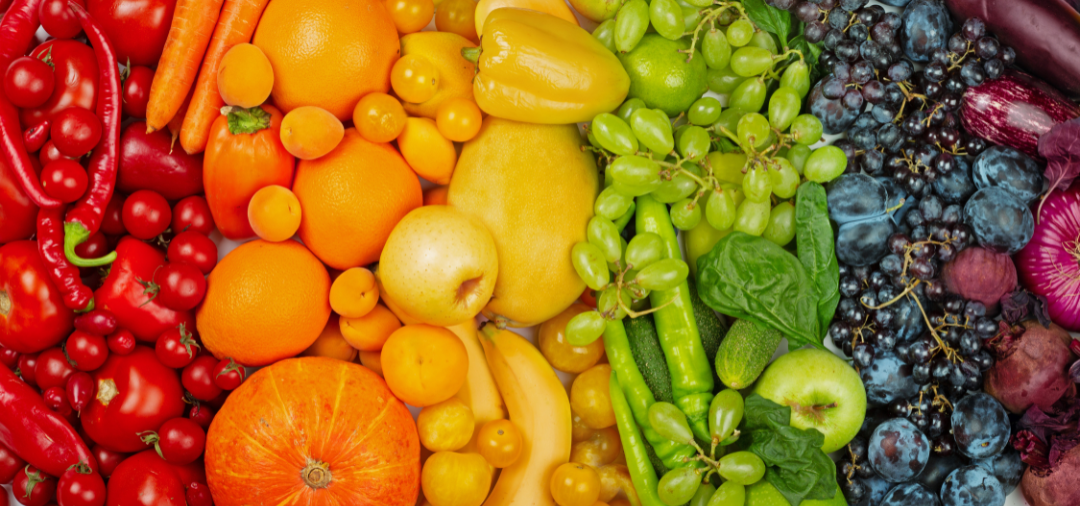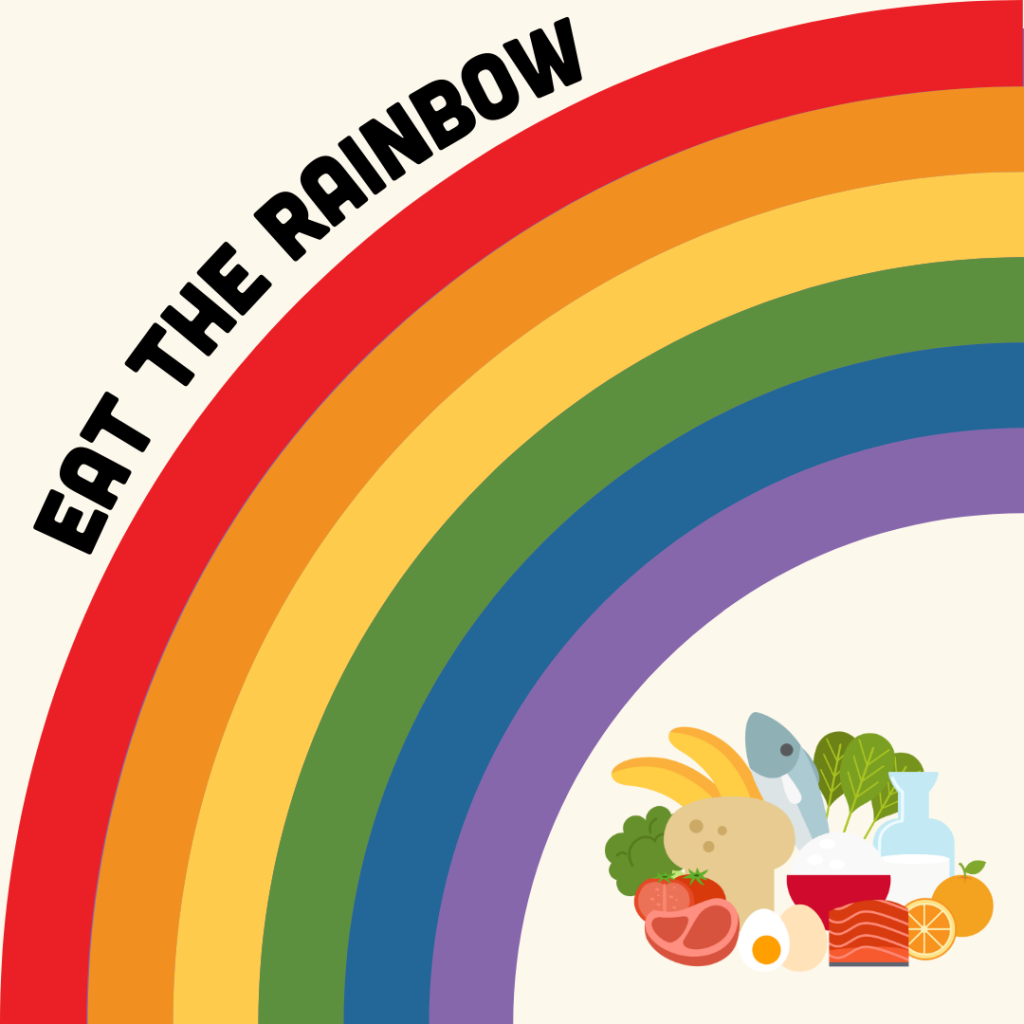Eating healthy can sometimes feel overwhelming, especially when trying to figure out the best choices, portions, and frequency. But it doesn’t have to be complicated!
A simple and effective way to build healthy, balanced meals is by following the “Eat the Rainbow” approach. Just like a rainbow is made up of vibrant colours that each serve a purpose, incorporating a variety of colourful foods into your diet provides your body with a range of nutrients that support overall health and well-being.
Just like a rainbow, fruits and vegetables are made of lots of colours. Each colour contains their own unique set of Phytonutrients. “Phyto” means plant in Greek and are nutrients that aren’t essential, but have antioxidant properties, preventing damage to cells. They cause pigments in fruits and vegetables.
Eating healthy can sometimes feel overwhelming, especially when trying to figure out the best choices, portions, and frequency. But it doesn’t have to be complicated!
A simple and effective way to build healthy, balanced meals is by following the “Eat the Rainbow” approach. Just like a rainbow is made up of vibrant colours that each serve a purpose, incorporating a variety of colourful foods into your diet provides your body with a range of nutrients that support overall health and well-being.
Just like a rainbow, fruits and vegetables are made of lots of colours. Each colour contains their own unique set of Phytonutrients. “Phyto” means plant in Greek and are nutrients that aren’t essential, but have antioxidant properties, preventing damage to cells. They cause pigments in fruits and vegetables.

Red foods contain Lycopene, which supports brain and heart health. Examples of foods include tomatoes, strawberries and red capsicum.
Orange and Yellow foods such as carrots, pumpkin, oranges and lemon, contain Carotenoids. These promote eye health and enhance the immune system.
Green foods contain Chlorophyll and Folate, which promote eye health, enhance immune system and support digestion. Foods like broccoli, spinach, avocado and celery are rich in these.
Purple and Blue foods contain Anthocyanins and are in foods including blueberries, grapes, eggplant and plums. These assist in protecting the body from cellular damage that can lead to illness or disease, along with reducing inflammation.
Beige foods such as garlic, mushroom, cauliflower and potatoes contain Allicin. Allicin helps to strengthen immune system with anti-viral and anti-bacterial properties
Incorporating a wide range of colours into a balanced diet is highly encouraged. It is recommended to consume at least 30 different plant-based foods per week, including a variety of fruits, vegetables, legumes, nuts, and grains. This helps ensure a broad intake of vitamins, minerals, and nutrients to support overall health and well-being.
Simple ways to add more colourful foods to your diet include:
- Creating a vibrant salad
- Making smoothies and smoothie bowls
- Adding a mix of vegetables to stir-fry dishes
- Choosing seasonal and frozen produce – budget-friendly with the same nutritional value!
Yakult offers free nutrition talks and tours that explore the importance of healthy eating, including the “Eat the Rainbow” concept. These sessions provide valuable insights into balanced nutrition and gut health, making it easier to incorporate a variety of colourful foods into your diet. Visit our website to learn more about these engaging and educational experiences!
Small changes can lead to big benefits! Challenge yourself to incorporate more colours into your meals each week, creating vibrant and nourishing dishes that not only look amazing but also fuel your body with essential nutrients.
Next time you prepare a meal, ask yourself, “How many colours can I add?” 🌈
Written by Jemma Kilmartin (Associate Nutritionist)
